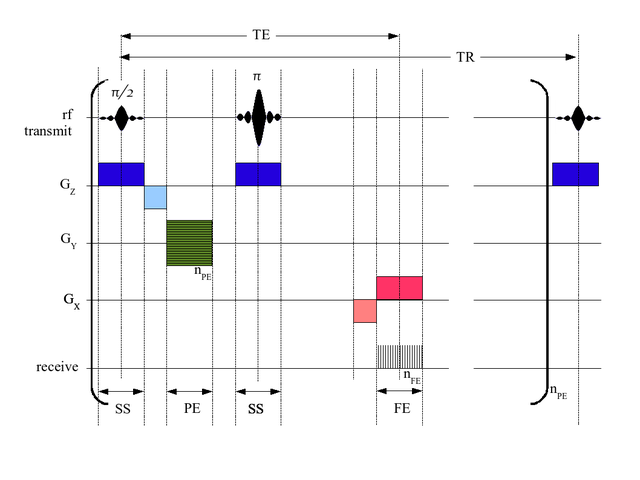Top Qs
Timeline
Chat
Perspective
Pulse sequence
From Wikipedia, the free encyclopedia
Remove ads
In Fourier transform NMR spectroscopy and imaging, a pulse sequence describes a series of radio frequency pulses applied to the sample, such that the free induction decay is related to the characteristic frequencies of the desired signals. After applying a Fourier transform, the signal can be represented in the frequency domain as the NMR spectrum. In magnetic resonance imaging, additional gradient pulses are applied by switching magnetic fields that exhibit a space-dependent gradient which can be used to reconstruct spatially resolved images after applying Fourier transforms.[2]



The outcome of pulse sequences is often analyzed using the product operator formalism.
Remove ads
See also
References
External links
Wikiwand - on
Seamless Wikipedia browsing. On steroids.
Remove ads
